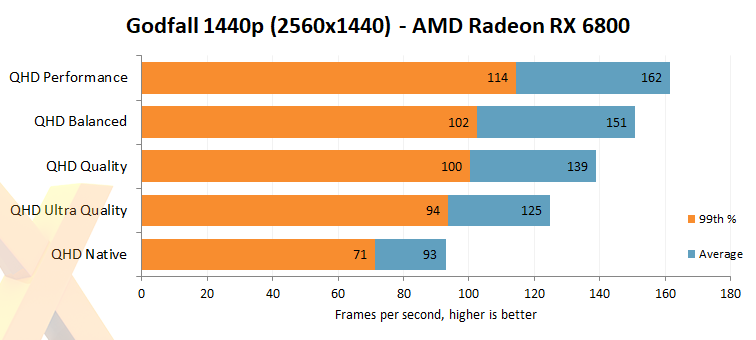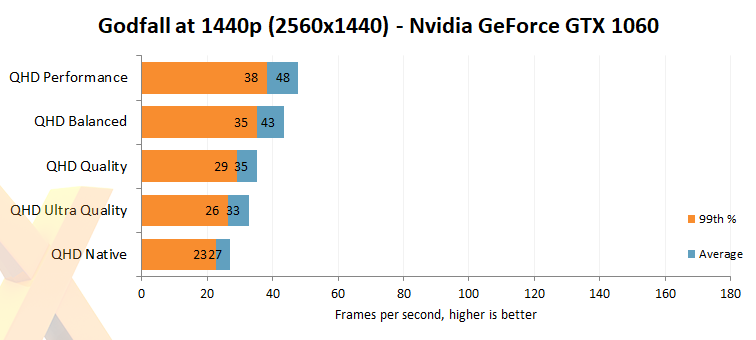FSR Performance on Radeon and GeForce
Putting AMD's performance claims further under the spotlight, we ran a 100-second benchmark section that's indicative of real-world gameplay.

Performance is actually pretty good with a Radeon RX 6800 16GB running native QHD rendering with no FSR active. Most will be happy with the 93fps average and 71fps 99th percentile figure.
Yet the emergence of high-framerate QHD monitors means there's merit in being able to push the framerate even higher for that smooth-as-silk feeling. FSR's four modes do what we expect, providing up to 74 per cent more performance than native.

These framerate-boosting technologies - DLSS and FSR - make most sense when the GPU feels the pain inflicted by resolution and image quality. Ramping up to 4K shows that native rendering at our chosen Epic preset isn't great for buttery-smooth gameplay. It's here that stepping up to the highest-quality FSR level provides immediate and useful benefits. That first preset is almost 50 per cent quicker than native with little loss in IQ, but if you choose to go down the fastest path, rendering is 238 per cent faster.
As we noted previously, we'd go with FSR Ultra Quality or Quality - the second preset is enough to provide almost double the performance.
Part of FSR's appeal, AMD says, is that it works on far more cards than rival DLSS. We therefore installed an Nvidia GeForce GTX 1060 6GB and ran at the same settings as shown on the first graph on this page.

The older, much slower card accrues less benefit from FSR. It is debatable whether the loss in image fidelity from native to Quality is worth the extra 30 per cent average framerate.









